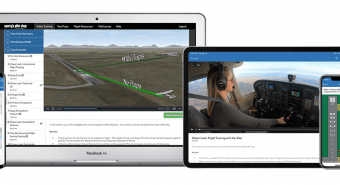Mediation Moderation And Conditional Process Analysis
Tags: Data Modeling
How to estimate detailed direct, indirect, and total effects for complex, intertwined mediating and moderating effects.
Last updated 2022-01-10 | 4.2
- Apply the PROCESS technique to separately estimate complex- combined direct
- indirect and total mediating and moderating effects in OLS models and in PLS path models using their own data and models.
- Have a wider range of precise analytical tools to more finitely estimate individual direct
- indirect and total mediating and moderating effects
- as well as the significant differences among them.
- Install and use our R-based allstatGUI and MEDMOD (PROCESS) software applications on their own data and models.
What you'll learn
* Requirements
* Students will need to install and run the latest no-cost version of R and RStudio software* although ample instruction to do so is provided.
Description
Mediation, Moderation, and Conditional PROCESS Analysis is a methodological statistical technique developed by Dr. Andrew F. Hayes which is applied to ordinary least squares (OLS) regression. PROCESS simplifies the 'untangling' of the analyses of combined direct, indirect and total effects driven by simultaneous mediating and moderating influences in an OLS regression model. However, PROCESS can also be directly applied to estimate the mediating and moderating effects of latent variables in PLS path modeling and in covariance-based SEM.
In 2013, Dr. A.F. Hayes developed and published a comprehensive statistical approach to estimate and interpret intertwined, cascading, mediating and moderating, direct, indirect, and total effects, and the comparisons of significant differences between them, as embedded in a series of 77 templates for linear models. Dr. Hayes comprehensively integrated these techniques into a coherent set of SAS and SPSS 'PROCESS' scripts to estimate these complicated effects in linear regression models. We extended these SAS and SPSS scripts with R scripts and a GUI interface and applied this approach directly to both OLS regression and to PLS path modeling results. In this course, we provide our complimentary GUI-based desktop application, allstatGUI, that reliably calculates these estimates using participants' own data and OLS models. This course explains the conceptual basis of PROCESS and demonstrates how these complicated mediating and moderating effects can be reliably estimated on your own data and models using the allstatGUI application developed by Mr. Dean Lim and Dr. Geoffrey Hubona.
All software is included with the course materials. The course is structured as a tutorial which begins with simple mediation models and then progresses through a series of moderation examples. All of the models and data and analyses are provided with the course materials. A course participant should then be able to apply the PROCESS analysis approach to their own data and models which may contain a mixture of combined mediating and moderating effects.
Anyone who regularly works with regression models would benefit from this course. This includes graduate students, faculty and quantitative and data analysis professionals. However, please note that both our allstatGUI application and the PROCESS application are written in the visual RGtk2 language in R which has been noted to have problems running on a Mac computer. So if you only have a Mac computer available to you, you might have problems getting the free software that comes with the course materials to run properly.
Who this course is for:
- Anyone who works with ordinary least squares (OLS) regression models will benefit from this course.
- SAS and SPSS users of PROCESS scripts who wish to transfer these skills over to using R software.
- Graduate students, faculty and quantitative and data analysis professionals who work with linear modeling will benefit from this course.
- Persons who work with partial least squares (PLS) path modeling and who wish to apply the PROCESS technique to latent variables in their own PLS path models.
- People who only have available Mac computers might have problems running the GUI-based RGtk2-written R PROCESS software that accompanies the course materials.
Course content
3 sections • 24 lectures
Introduction to Mediation, Moderation, and Conditional Process Analysis Preview 01:59
Introduction to Mediation, Moderation, and Conditional Process Analysis describes the foundation of mediation and moderation analysis as well as their analytical integration in the form of "conditional process analysis", sometimes called "PROCESS" in abbreviation.
Mediation-Moderation Introduction Preview 05:46
Example PROCESS Templates Preview 06:58
VIMGUI, Rcmdr, and Rattle ALLSTATGUI Applications Preview 10:30
MEDMOD Application and PROCESS Preview 09:33
Mediation Concepts (part 1) Preview 08:12
In statistics, a mediation model is one that seeks to identify and explicate the mechanism or process that underlies an observed relationship between an independent variable and a dependent variable via the inclusion of a third explanatory variable, known as a mediator variable.
Mediation Concepts (part 2) Preview 08:35
Model 4 Simple Mediation Example (part 1) Preview 09:10
Model 4 Simple Mediation Example (part 2) Preview 07:30
Presumed Media Influence (PMI) Study Examples #2, #3 (part 1) Preview 07:25
Presumed Media Influence (PMI) Study Examples #2, #3 (part 2) Preview 09:04
Presumed Media Influence (PMI) Study Examples #2, #3 (part 3) Preview 07:49
Mediated Examples #4, #5 using PLS Path Modeling (part 1) Preview 09:26
Mediated Examples #4, #5 using PLS Path Modeling (part 2) Preview 09:41
Mediated Examples #4, #5 using PLS Path Modeling (part 3) Preview 06:41
Mediated Examples #4, #5 using PLS Path Modeling (part 4) Preview 02:59
Simple Moderation (part 1) Preview 09:15
In statistics and regression analysis,moderation occurs when the relationship between two variables depends on a third variable.








 This course includes:
This course includes:
















